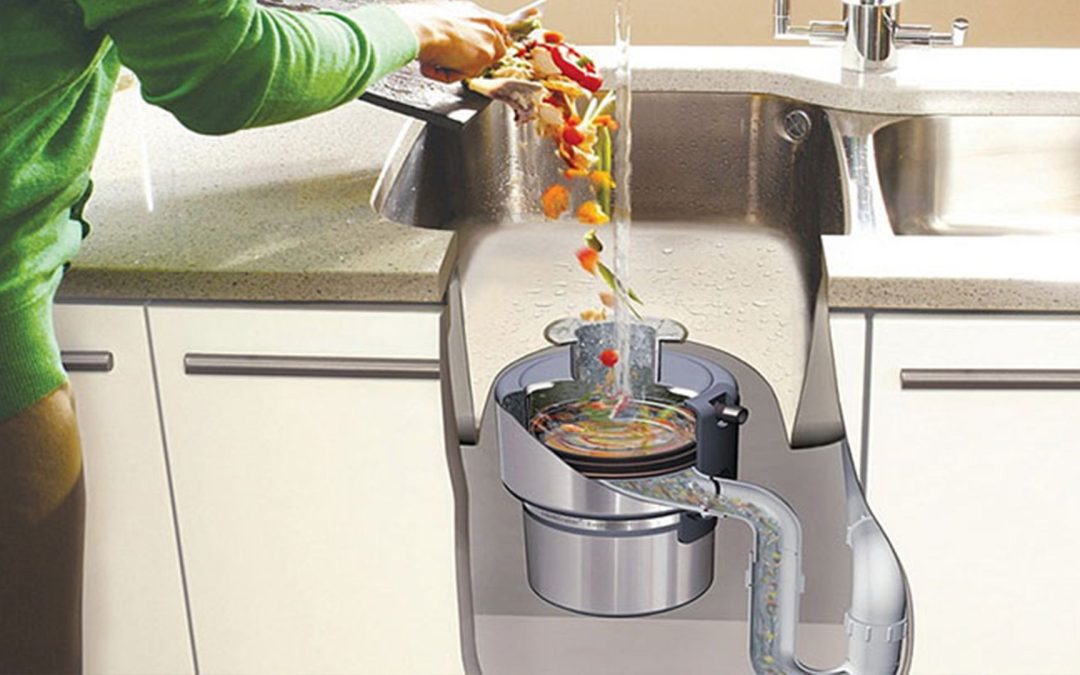When it comes to the topic of garbage disposal, there is a lot of misinformation out there. People seem to think that these little machines, such as kitchen sinks, water heaters, and disposal units, can take care of everything and never need any attention. In reality, garbage disposals are not miracle workers – they need some love and care to function properly.
What Is The Best Garbage Disposal To Buy?
Several factors should be considered when choosing a garbage disposal. The first is the type of waste that you will be disposing of. Most residential garbage disposals will have steel grinding chambers. Steel is a stronger material and is rust and corrosion-resistant. You can also buy a disposal with plastic grinding chambers. Plastic is a more economical option that is still corrosion-resistant.
If you notice that your disposal is not dumping food properly, you may need to upgrade to a higher-capacity model. If you notice that the disposal is clogged, it could be a sign that it is not working properly. If the disposal leaks, you can use a flashlight to see where the water is coming from.
The size of your garbage disposal is another factor to consider. Choosing the right size depends on how much food you prepare and how many people you plan to cook. For small households, you can choose a model with a 1/3 or 1/2 HP engine. It would be best if you chose a model with a half to three-quarter-horsepower motor for medium and larger families.
What Cannot Go In A Garbage Disposal?
In the garbage disposal, a few things shouldn’t be put. Clogs and damaged blades can result from these items. You should not put eggshells, vegetable peels, and omelet waste into the disposal. However, they can be put in a trash can if it is cut into pieces.
Other items that shouldn’t be put down in the garbage disposal include stringy and fibrous waste, nutshells, and plastic items. It would be best if you also kept an eye out for any drinking glasses or bottle caps. Keeping these items out of the garbage disposal will prevent loud noises and keep your garbage disposal working well.
If you’re unsure what foods can and cannot go into your garbage disposal, try to avoid using these items when preparing your meals. Foods with high levels of fat and grease can clog the pipes and cause a clog. You can use anti-grease chemicals at your disposal to prevent clogging. Aside from these things, you should avoid putting any coffee grounds at your disposal. This substance can cause a sticky paste that can clog the drain and slow the entire process.
What Are The Two Types Of Garbage Disposals?
The two types of garbage disposals differ primarily in motor power. The higher the motor power, the more powerful the disposal will be. It should be able to handle tough material without jamming. Most garbage disposals have a grinding speed of 1725-2800 RPM. A 3/4 HP motor is considered to be more powerful than a 1 HP motor.
Most garbage disposals are hardwired into the home electrical system, but some can be installed as plug-in models. To install these types of disposals, you will need a plumber. You will also need a bucket to catch the water since there is a chance of leaking.
The more expensive disposals usually feature more blades and multiple grind stages to reduce the risk of clogging. The more expensive models may also have an auto-reverse feature that will help you unjam the disposal if it encounters a jam.
Are Garbage Disposals A Good Idea?
A lot of information must be gathered before buying a garbage disposal. One of the most important things is that there are no one-size-fits-all garbage disposals. Before buying one, measure the space under your sink to ensure it will fit. You should also know that larger disposals tend to have larger motors and grinding chambers. You should also check for noise levels. Some disposals are built with soundproofing layers to reduce noise.
Another benefit of garbage disposal is that it can be green and reduce emissions from garbage trucks. These units will also help protect water quality in your area because they will reduce the amount of food in landfills. Furthermore, they will help improve drainage and protect your pipes from damage.
Another benefit of garbage disposals is that they can handle various food scraps. However, some foods cannot be processed by garbage disposals. Fibers and stringy foods can jam the disposal’s blades. Foods such as hard products and meat can also dull the blades. Additionally, starchy foods can cause the drain pipe to clog, resulting in the need for expensive repairs.
Should You Run Water With Garbage Disposal?
Some websites advise you never to run water while operating the garbage disposal. They say that running water causes the items to expand and clog the disposal. You can try to prevent this by using cold water, which absorbs much slower than hot water. Also, avoid starchy foods, which can clog the disposal.
Another way to prevent clogs is to flush small food scraps through your garbage disposal with cold water. This will prevent them from expanding and clogging your pipes. Also, cold water helps flush the waste from the disposal into the main sewer line. Following these tips will keep your disposal operating efficiently for longer.
If you can’t wait to use the garbage disposal, you can run water for about 10 seconds. Afterward, turn off the water. You can also use cold water to rinse dishes. This will help to remove excess fats from the dishes. If left in the pipes, these fats will harden.
Should You Put Ice Down Your Garbage Disposal?
There are many benefits to putting ice down your garbage disposal, but it’s best to use the correct technique to avoid clogging the drain. Ice cubes can clog the disposal drain line, leading to a black water backup. Putting a small amount of ice into the drain and running the garbage disposal is the right way.
Putting ice down your garbage disposal is a good way to deodorize it and clean the blades, but it won’t remove foul odors. Using hot water can also cause a foul smell because it can agitate fatty deposits, resulting in a stale, unpleasant odor.
In addition to ice, you can also put salt and vinegar down your garbage disposal. Vinegar works to eliminate bacteria and other waste that can clog up the disposal. Baking soda also helps clear away odor-causing debris.
Garbage Disposal Clogged With Baking Soda And Vinegar?
Baking soda and vinegar are known to unclog garbage disposals. Mixed, they act as a catalyst and break up the gunk. They also help to prevent odors from clogging the disposal. Use the solution to unclog the garbage disposal for about 20 minutes. Then, run water through the disposal.
Baking soda is easily accessible and inexpensive. It is also mild and gentle on sinks and pipes. It also does not harm the environment, which makes it a safe and effective solution. To use baking soda as a drain cleaner, pour about 1/4 cup into the disposal and let it sit for at least 10 minutes. After the mixture has sunk into the disposal, pour a mixture of 2 cups of ice and 1/2 cup of salt. The mixture will break down any food scraps in the drain.
Baking soda and vinegar are safe to use in a garbage disposal as long as you rinse the disposal after each use. Vinegar, however, can damage the rubber parts in the disposal. If you use vinegar to unclog a garbage disposal, pour hot water before adding baking soda. This solution should remain at your disposal for at least an hour. Afterward, run hot water through the disposal once more to rinse the solution.
How Often Should You Clean Your Garbage Disposal?
A cleaning garbage disposal can be an important part of your kitchen hygiene. But how often should you do it? The answer depends on the frequency of use and how much care you take with your garbage. For instance, if you compost your food, you may only have to clean your disposal once every two weeks. If, on the other hand, you regularly toss food scraps into your disposal, you may have to clean it more often than that.
First, make sure that the garbage disposal is turned off. You can find the switch next to it, underneath the sink. Ensure that nothing is clogging the disposal, such as bones or other large items. Also, use a flashlight to check the impellers to ensure no other objects are stuck. You may want to use tongs if you find big objects inside.
Once a week is a good idea. You can go longer between cleanings if you are careful with your dishes. If your disposal starts to smell, it needs cleaning.
Conclusion
Batch-feed garbage disposal is the best choice for locations where adding an electrical switch isn’t viable. It is up to you to decide which unit is best for you based on your circumstances. You have two types to choose between the Batch feed garbage disposal and continuous-feed garbage disposal. Both get the job done; however, continuous feed disposals are the easiest. The continuous feed version of the disposal also has an open mouth and is controlled by a switch.
Make sure that the garbage disposal you choose fits your household’s needs. Continuous feed garbage disposals typically involve a wall switch, sink-top switch activator, or power outlet below the countertop. On the other hand, batch feed disposal requires that you place your food waste into the chamber and close the stopper lid to activate the food grinder inside. Although disposals are designed to handle food items, it is not fully equipped to deal with fibrous food that can cause it to jam. Use them for compost piles instead. A compost bin that can carry vegetable leftovers such as potato peels.



